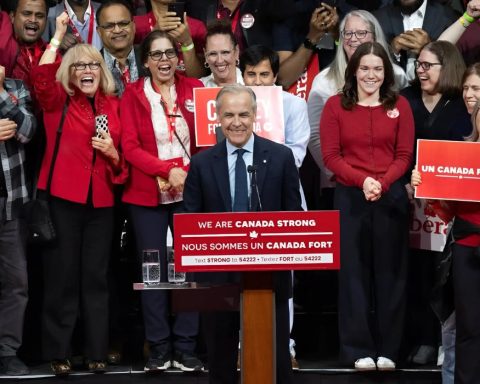With federal plans being drawn up for unprecedented levels of public investment to help us recover from the economic fallout of the COVID-19 crisis, there is a once-in-a-lifetime opportunity to set Canadian businesses up for success. If we get this right, over the next decade we can create 6.7 milllion high-quality, green-tinted blue- and white-collar job years over the next decade, while adding more than $1 trillion of value to the Canadian economy.
Beyond the obvious benefits for business and employment, well-calibrated green recovery investments in energy efficiency and electrification of mobility would make our homes and workplaces more comfortable and cheaper to run, while getting around would be a lot cheaper and cleaner, saving the average participating household $1,414 per year on home heating and power costs (which will be partially offset by capital costs) and a net $1,917 per year on fuel costs for their vehicles^.
An "Own the Podium" strategy for Canadian companies is a potentially powerful engine–powered by sustainable biofuels, of course–for wealth creation. But for it to work, it must leverage our inherent economic strengths and how they line up with where people spend money.
This is similar to what we already did with the Olympics: identifying where we have the best chance of winning medals and taking account of the value of different medals.
With summer at the doorstep, most of us are not thinking about winter right now, but it is the Winter Olympic Games where we excel, ranking third in the world for all-time medals versus 20th for the Summer Olympics. Given our long winters, tall mountains and frozen bodies of water, it’s no surprise that three of the four areas where Canada leads the world in medals in the modern Olympics are ice hockey, freestyle skiing and curling – all sports that combine the majesty of Canada’s natural environment with the traditional talents of our people. (The fourth sport, in case you were wondering, is lacrosse, which builds on the traditions of our Indigenous peoples.)
What are Canada’s special economic advantages? As Navdeep Bains, Minister of Innovation, Science, and Economic Development, is fond of saying, it’s our abundant nature and people.
And if we look at what people spend money on, the top four annual expenditures for Canadian households are shelter, transport, food and energy, according to analysis by Ralph Torrie, a senior associate with Sustainability Solutions Group and partner at Torrie Smith Associates. We happen to have almost unparallelled assets in each of these areas.
Who knew Canada is the world’s largest commercial landlord*, home to 12 of the top 40 real estate investors in the world? The real estate assets of Canada’s largest real estate investors total $493 billion, with Brookfield Asset Management alone representing $202 billion in more than 30 countries.
We’re also the fifth largest exporter of cars in the world by value, and among the top five producers of important minerals for rapidly expanding battery markets, including nickel, cobalt and graphite (and soon lithium from Alberta’s oilfield brines will be added to that list with companies like E3 Metals leading the way). According to BASF Canada president Marcelo Lu, “Canada is one of the few countries that has all the elements to produce a lithium-ion battery for electric vehicles.” We are also the global hub for mining finance, with the TSX being the world’s number one mining and exploration listing venue.
Canada is the world’s fifth largest agricultural exporter thanks largely to wheat and canola, but we’re rapidly becoming a plant-protein powerhouse. We rank number one in pulse exports (fuelling a growing global appetite for pea protein), and our own Maple Leaf Foods is one of the largest plant-based meat players in the world.
We are the fourth largest oil producer, and we have the largest natural bitumen deposit in the world, which have uniquely high concentrations of asphaltene, a potentially lucrative feedstock for lightweight materials. Instead of extracting oil from the bitumen to burn in tailpipes, we could harvest materials that are more valuable than oil, including carbon fibres, which would be the material of choice in construction and for making electric cars and trains if we can crack the cost nut.
And as a nation that generates more renewable power than any country outside of China, we could be a supplier of choice for the growing green hydrogen market, which could be a trillion-dollar industry by 2030.
What will determine who wins in these goliath markets?
They are all in a state of flux, with the common denominator being rapid decarbonization, since low-carbon processes are now money-savers and will help secure access to large markets, including Europe, which is throwing up trade barriers for countries that don’t meet climate standards.
Electric vehicles (EVs) already save people so much money on fuel that many EVs have a lower total cost of ownership than their polluting cousins. Smart buildings have lower energy bills and happier tennants, which is why property technology is exploding, with many Canadian players, including the members of the Building Energy Innovators Council, leading the way. (Exporting this know-how via our $493-billion real estate investment portfolios offers the chance to earn higher returns for Canadian investors, while vastly reducing greenhouse gas emissions on a global scale). Farmers who have shifted from expensive nitrogen inputs to regenerative farming methods are being rewarded with lower costs and new contracts with major companies like General Mills.
Investment in renewable energy capacity hit US$272.9 billion in 2018, about triple the investment in coal- and gas-fired generation capacity combined, and green energy with storage is now on par with or cheaper than fossil energy in most countries.
The oil and gas sector is also reeling after the COVID-19 crisis drove prices into negative terrain in April for the first time in history. Last week, Mark Little, the CEO of Suncor, warned that EVs could disrupt future oil demand as much as the coronavirus has. He also noted that “now is the time to take a big step forward” to tap into low-carbon growth opportunities, including renewable jet fuels, hydrogen and carbon fibres, which have the potential to quadruple oil sands revenues. Little followed up these words a couple of days later with a $15 million initial investment in LanzaJet, a new U.S.-based company that aims to commercialize the production of sustainable jet fuel to help the aviation sector meet its climate targets.
If we want to Own the Podium in the fast-growing markets for smart buildings, EVs (and their batteries), sustainably produced food, green energy and advanced materials, there are three things the federal government can do:
- Use a jobs-rich $106 billion green recovery to buy or move forward good policy in cities and provinces to create domestic markets to scale up production for these high-growth, low-carbon markets. That amount is a big carrot, and with the bulk of the money targeted to flow in the next two years, there would be powerful incentive for provinces and municipalities to fulfill the conditions in order to ensure access to these funds. As the centrepiece of the economic recovery in the short-term, we can attach strings to funds for an ambitious green renovation wave to upgrade our homes and workplaces to ensure provinces and municipalities commit to upgrading building codes by 2022 for net-zero buildings (including embodied carbon) and to remove barriers for affordable housing by implementing the Declaration for Resilience in Canadian Cities. We can do the same for the power sector by tying stimulus funds for the power system to ensuring fair grid access for renewables. At the federal level, it is time to send a signal to markets that Canada wants to be a serious player as a manufacturer of the next generation of zero-emissions vehicles (ZEVs), by introducing a 100% ZEV mandate to be phased in by 2030, leveraging the purchasing power of Canada’s $85 billion annual market for new vehicle sales. We can also support farmers to enrich their soil and improve their bottom lines by paying them for verified carbon credits.
- Dedicate $5 billion in research and development and piloting over the next five years to fund technological breakthroughs in bitumen-based carbon fibres, green hydrogen, renewable jet fuels and batteries. This would take a page from former Alberta Premier Peter Lougheed, who invested $1.4 billion almost 50 years ago to figure out how to affordably extract oil from bitumen, which unlocked an economic bonanza from Alberta’s oil sands.
- Attract major investment from around the world by topping up the current federal Strategic Investment Fund’s $1.6 billion budget over five years to $40 billion, and refreshing its mandate to tackle low-carbon, high-growth markets where Canada can play to win. (It should be noted that for almost any large project in Canada to go forward, these investments will need to include meaningful partnership with Indigenous communities.)
We could easily pay for all this by issuing green bonds backed by our AAA credit rating. Or by closing just a few of the 171 tax loopholes that deliver debatable public benefit at a large perpetual cost. Or by cracking down on large corporation tax avoidance, which runs over $10 billion per year.
If we act to Own the Podium in these tangible markets it would also be a shot in the arm for Canada’s financial services and technology sectors, Toronto Finance International estimates there’s potential to grow annual revenues in low-carbon banking, insurance and investment by $110 billion in the next five years.
And let’s not forget Shopify. Our natural assets and strengths in the tangible economy can produce spin-off benefits and innovations for the services economy. If we didn’t have snowy mountains, there wouldn’t be much of a market for snowboard, and maybe no Shopify, which was born as an online snowboard shop and now powers more than a million e-commerce storefronts from all over the world.
The games are on.
If we want to be at the podium as suppliers rather than buyers in these rich, growing markets, now is the time to be bold.
Toby Heaps is the editor-in-chief and co-founder of Corporate Knights.
A version of this article first appeared in the Toronto Star.
^Based on analysis by Ralph Torrie, which found that deep retrofits of 80% of the housing stock will save each household $1,414 per year on home heating and power costs. Fuel savings for personal vehicles are based on the average household having 1.8 vehicles each, with annual fuel savings of $900 per car and $1230 per SUV, based on a $ /Litre and 12 cents per kwh.
*Source: IPE list of top real estate investors, with three additions: Brookfield Asset Management’s $202 billion, Sun Life SFC’s $42 billion and GWL Realty’s $28 billion in real estate assets.





